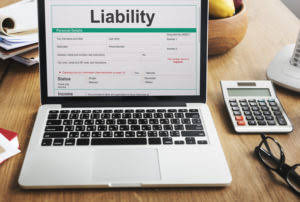
Trade payables are typically recorded in the current liabilities section of a balance sheet. This is because trade payables are obligations to pay for goods or services that have already been received from a trade supplier. Understanding how efficiently a company manages its outstanding payments to suppliers is crucial for assessing its financial health. Days Payable Outstanding (DPO) is a key metric that measures the average number of days a company takes to pay off its accounts payable. A well-managed DPO can indicate strong cash flow and favorable supplier relationships, while an excessively high or low DPO might signal underlying What is bookkeeping issues. Accounts payable is a critical element of financial management, reflecting a company’s short-term obligations and influencing its cash flow and vendor relationships.
- Mathematically, the chances of disclosing Other payables separately stands zero.
- By contrast, days sales outstanding (DSO) is the average amount of time for sales to be paid back to the company.
- Onboarding more vendors or switching vendors might be the best plan of action for this scenario.
- Hence, accountants say that under the accrual method of accounting expenses are reported when they are incurred (not when they are paid).
- Trade payables are the amounts a business owes to its suppliers for goods or services bought on credit.
- Say a software company offers you a monthly subscription for one of their programs, billing you for the subscription at the end of every month.
Manage vendor contracts

Generally, a company acquires inventory, utilities, and other necessary services on credit. It results in accounts payable, a key accounting entry that represents a company’s obligation to pay off the short-term liabilities to its creditors or suppliers. DPO attempts to measure this average time cycle for outward payments and is calculated by taking the standard accounting figures into consideration over a specified period How to Invoice as a Freelancer of time. Creditors are the suppliers or service providers your business owes money to, while trade payables refer to the amount owed to those creditors. In accounting, trade payables are recorded on the balance sheet under current liabilities, reflecting the company’s obligation to its creditors. The invoice processing stage is the starting point for accounting trade payables.

Want to Cut AP Costs and Boost Accuracy? AI Can Help

Clarify payment statuses proactively – Provide updates on upcoming disbursements to avoid confusion. Stay connected with cutting-edge procurement and supply chain insights – anytime, anywhere. By checking the box below, you consent to GEP using your personal information to send you thought leadership content – such as white papers, research reports, case studies – and other communications. GEP representatives may contact you to provide additional information or answer questions. If the net realizable value of the inventory is less than the actual cost of the inventory, it is often necessary to reduce the inventory amount.
- Bills Payable (B/P) is a bill of exchange accepted by a business the amount for which will be payable on the specific date mentioned in the bill.
- Therefore, the credit balance in Accounts Payable should be equal to the amount of vendor invoices that have been recorded but have not yet been paid.
- If accounts in Other payables in the past year become material in the current year, they may need to be disclosed into major defined current liabilities accounts.
- Laptops and monitors are purchased for new hires in the finance department.
- It’s part of AP but typically isolated to help track inventory or goods-related obligations.
- Trade payables are the subset of AP that specifically relate to the purchases of goods used in production or resale.
Slavery Statement
- In June 2024, the telecom company announced that it planned to raise funds worth Rs. 2,458 core via preferential share issuance to Ericsson and Nokia.
- Trade payable is a credit offered to the buyer against the purchase of goods or services received.
- It allows you to determine which period to apply the related payables and whether it belongs to the previous one.
- Likewise, we usually need to make the trade payable journal entry starting with the inventory account or purchases account depending on whether we use the perpetual inventory system or periodic inventory system.
- The following table highlights the symmetry between a company’s account payable and its vendor’s account receivable.
Imagine if a company allows a 90-day period for its customers to pay for the goods they purchase but trade payables has only a 30-day window to pay its suppliers and vendors. This mismatch will result in the company being prone to cash crunch frequently. Two different versions of the DPO formula are used depending upon the accounting practices. Accounts payable (AP) represents how much money the company owes to its supplier(s) for purchases made on credit. Whether the trade payables in these programs remain trade payables or should be reclassified as short-term bank debt is judgmental and not directly addressed in U.S.
What is Trade Payable? (Definition, Explanation, Example, and Journal Entry)
It ensures that a company’s financial statements reflect its true financial position. This accounting process involves several steps, from the initial recording of an invoice to the final payment to the supplier. In accounting, trade payables are recorded as a credit when a company receives goods or services on credit. When the business pays the invoice, it makes a debit entry to reduce the trade payable, reflecting the payment and clearing the outstanding amount. Accounts receivable and accounts payable are both line items on a company’s balance sheet. Accounts receivable is an asset and represents the money owed to a company from customers that bought goods or services on credit.

